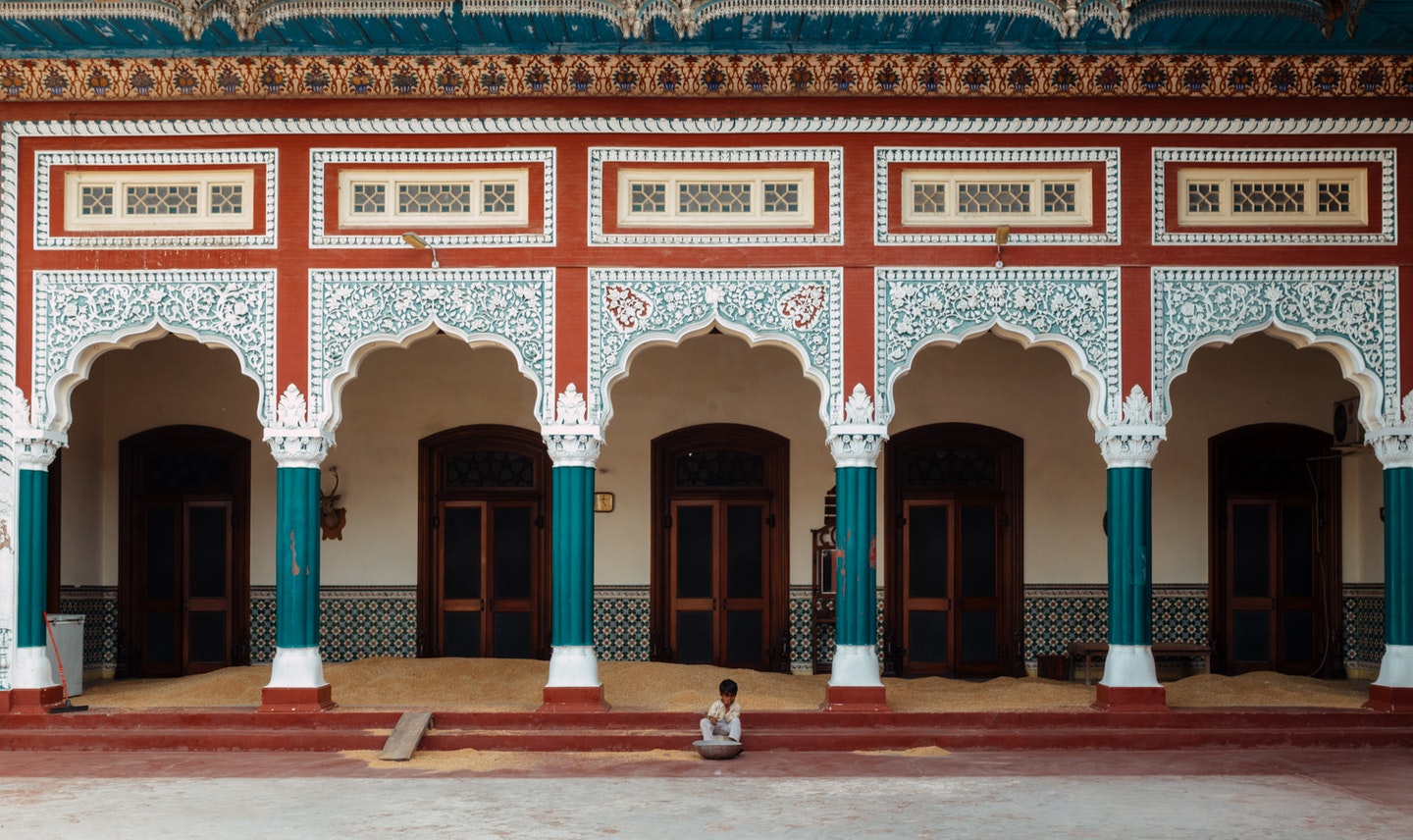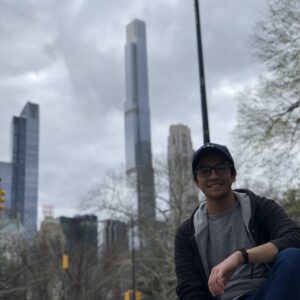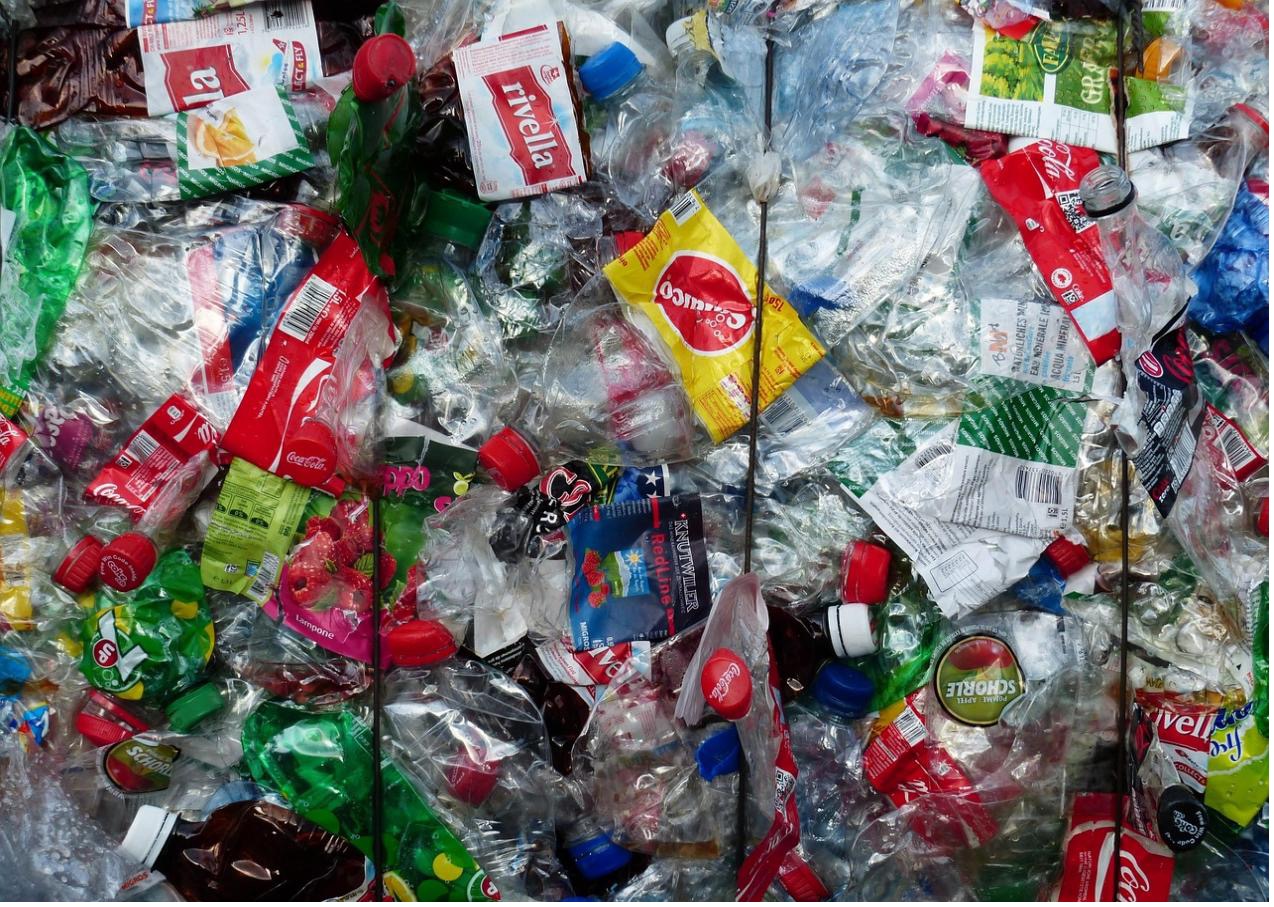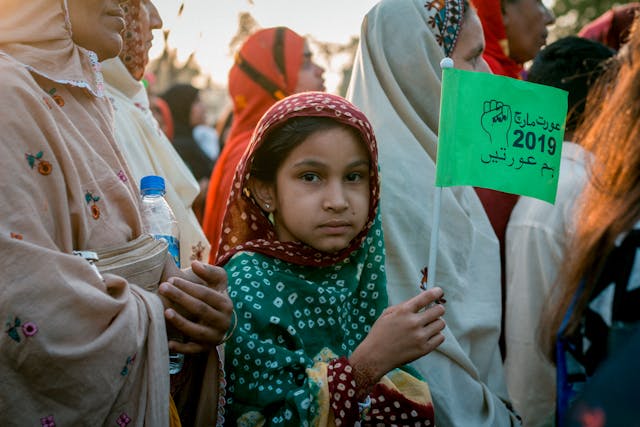The Constitution of Pakistan unequivocally gives the right to free education to all children between the ages of five and sixteen years (Pakistan, 2018). In theory, the eleven years of free and compulsory education cover, on average, elementary education (grade 1 to 5), middle school (grade 6 to 8), and lower secondary education (grade 9 and 10). According to the United Nations Children’s Fund, approximately 22.8 million children aged five to sixteen years are out of school in Pakistan, which amounts to almost 44 percent of the population in this age bracket. This makes Pakistan the home of “world’s second-highest number of out-of-school children” (UNICEF, n.d.).
The paper discusses the existing inequality of opportunity in the education system of Pakistan along three spectrums. First, the inequality against children belonging to minorities or marginalized groups. Historical records show that the educational network in the pre-colonial Indian subcontinent accommodated ethnic and language diversity (Siddiqui, 2016a). Second, the inequality of opportunity on the provincial level. Particularly, the case of Balochistan, which stands the lowest among all the provinces in the context of education, sheds light on the substantial inequality of opportunity along regional lines. Third, the inequality of opportunity based on socio-economic classes, which can be witnessed in the significant disparity among private, public and religious schools in terms of school facilities, teaching methods, and future opportunities.
To counter the educational inequalities prevalent in Pakistan, equality of opportunity should be ensured for children belonging to any group or gender, in any area, and in any kind of school. This uniformity in educational opportunities is somewhat reflected in the long-term vision of Yaksaan Taleemi Nizam [Uniform Education System] put forward by the government of Pakistan. There are, however, a few paths that need to be tread carefully, to ensure equality of opportunity for every child. Lastly, the set of policy designs, that will be needed to actualize universalization of educational opportunities, will ultimately depend on the government’s expenditure on education, which has unfortunately been meager to date.
Inequality of opportunity in the education system of Pakistan is violating children’s right to learn for a long time, which needs to be challenged in the context of diversity and gender disparity, provincial differences, and socio-economic classes.
Learning from the Past: The Challenge of Marginalization
History carries fruitful insights for present and future challenges. The present issues in the education system of Pakistan cannot be entirely divorced from the history of Pakistan, especially that traces back to the colonial times in British India and even before. Generally, the justification of colonialism in the Indian Subcontinent, particularly by the colonizers, was based on a concocted concept of “position superiority”, where one group believes in the superiority of their living method, literature and education system based on “imperialist powers” (Siddiqui, 2016b).
This narrative exalted the status of the British, especially when compared to local Indians, who were popularized as “illiterate” (Siddiqui, 2016a). This stamp of illiteracy presumed and portrayed that lack of education was the order of the day in pre-British India, and even if there was an education system, it was weak and inaccessible to the general public. Whatever system of education that developed in India later on, then, becomes the legacy of the British colonizers, according to this narrative.
An analysis of pre-British and British India, however, reveals that before the colonization, the Indian subcontinent “had a comprehensive educational network which was affordable and accessible to the masses”. In fact, India underwent an education “undevelopment” in the wake of “the prolonged colonial period” (Siddiqui, 2016c). Sir Thomas Munro, a colonial administrator and the governor of Madras Presidency, admitted this while commenting on the pre-British education system of Madras: “the state of education here was higher than it was in most European countries at no very distant period” (Siddiqui, 2016a).
There must have been problems in the education system at that time, but overall, circumstances were better before than after the arrival of the British. For example, there were a diversity of schools and pedagogy mechanisms, throughout the subcontinent, involved in teaching a variety of subjects, keeping into consideration the differences in languages, ethnicity, and cultures. Moreover, “the educational fees were nominal and education was available at village level” (Siddiqui, 2016d).
The solutions to the current problems in the education system of Pakistan can be inspired by the system that existed in pre-British India. This is not to undermine the importance and necessity of modern education, but to learn, in hindsight, from the spirit of the educational arrangements of pre-British India – to expand and ramify modern education in Pakistan that serves to uplift the contemporary people.
Education at that time, on account of diversity in cultures, ethnicities and languages, was also diverse but accessible to the common masses. Pakistan, still, is a culturally diverse country, inhabiting people belonging to a wide range of groups and backgrounds. However, today, the education system appears to be unaccommodating to minorities. For example, around 60 percent of non-Muslim students and 70 percent of teachers experience discrimination, disrespect or exclusion on account of faith and ethnic differences. Moreover, the curriculum and teaching methods largely lack the values and lessons on “peaceful co-existence, empathy, tolerance, equality and human rights” that may teach students to participate in interfaith and fruitful dialogue (Nazeer, 2019).
To ensure every child gets the opportunity to receive education, Pakistan should take into account the diversity of people while bringing reforms. Any attempt to enforce a singular educational agenda to create “national integration”, like through the so-called Islamization in Zia-ul-Haq’s regime, will result in producing a greater divide, on account of marginalizing minorities, which in the case of Pakistan are divided across cultural, ethnic and lingual grounds (Hoodbhoy, 2020). The marginalization of communities, brought about by the system of education, is the violation of children’s right to learn, especially of those who belong to minority groups.
Any attempt to enforce a singular educational agenda to create national integration will result in producing a greater divide on account of marginalizing minorities.
The gender gap in the classroom is a worrisome and crucial problem that results in marginalizing girls in the education realm. The indicators on school attendance, enrollment rate, out of school children, and literacy rate in the Pakistan Social and Living Standards Measurement (PSLM) survey for 2018-19 show stark gender disparity in the education system of Pakistan. For example, the male literacy rate for the population of age 10 or above is 71 percent, whereas it is only 49 percent for females (PSLM, 2020). The list of such indicators can go on, but the trend remains consistent: “boys outnumber girls at every stage of education” (UNICEF, n.d.).
It goes without saying that the educational opportunities for boys are also inadequate, but they are even worse for girls. The need of the hour is to provide supportive educational environment and facilities to all children in general, but to girls in particular. The challenge of marginalization in the education realm of Pakistan, thus, becomes two-pronged. On one end, there is a need to ensure equality of educational opportunities to minorities who are divided across cultural, ethnic, and lingual grounds. On the other hand, there is an urgency to close the vast gender gap by giving special attention to girls’ education.

A Pakistani child sitting alone, image by @aadil.
A Glimpse into the Present: The Challenge of Provincial Disparity
To grasp the disparity in the education system of Pakistan along provincial lines, it is important to get the gist of the conditions of education in the areas that have the weakest educational arrangements. The grimmest educational conditions are witnessed in the province of Balochistan, where about 59 percent of children aged five to sixteen are out of school (PSLM, 2020). These out of school children comprise students who have either never gone to school or dropped out afterward. Conversely, Punjab is considered to have better opportunities than other provinces in Pakistan, with 21 percent of children of the same age group being out of school (PSLM, 2020). As seen from these figures – and many others – there is a huge gap between the two provinces in terms of education.
An account of Balochistan, therefore, reveals not only the limitations in that province particularly, but also displays the large disparity in educational opportunities in Pakistan at the provincial level. The purpose of discussing the conditions in Balochistan specifically is not to portray a pessimistic note of educational conditions overall, but to identify, understand and propose assistance to those who are left behind. Also, the education system in Punjab, which stands the strongest among other provinces, is not up to the mark either.
To create equality of opportunity among provinces, a particular boost to Balochistan is needed, rather than undercutting educational budgetary and resources of other provinces. The idea is to enable all educational institutes to achieve at least the minimum standards of education, situated anywhere in Pakistan, to fulfill the promise of children’s right to education.
Balochistan is the largest province of Pakistan by area. It is also the least populated, inhabiting around 12 million people in 2017 (PBS, 2017). Figures show that educational opportunities in Balochistan did not grow with the population, but they mildly increased in other provinces. For example, in 2013-14, around 27 percent of children aged 5 to 16 were out of school in Punjab, whereas 51 percent were out of school in Balochistan. In 2018-19, the percentage for Punjab decreased to 21, but for Balochistan, it increased to 59 (PSLM, 2020). The same trend applies to multiple indicators including net enrollment rate and completed primary and higher education.
Why are relevant indicators falling in Balochistan, when the indicators for other provinces are moving up? There are many explanations for this. Given the less population density of Balochistan compared with the number of schools available, one reason for low enrollment rate is the large distances between schools and homes (Maqsood, 2020; World Bank, 2008). This is especially true for rural areas. It also impacts girls’ education, as research shows that “the likelihood of a girl child to remain in school is largely correlated with the distance of a school from the residence” (Iftikhar et al., 2019).
The problems in the educational system of one place may be specific to that place and may require, upon the identification of those problems, policies that address the local issues endemic to local schools.
Other than being few in numbers, the conditions of public schools in Balochistan are not desirable either. There is absence of basic facilities like electricity, potable water, proper sanitation, and furniture – let alone modern equipment and teaching methods. According to a report, “80.50 percent school buildings in Balochistan are in poor shape” (Maqsood, 2020). This is also reflected in the fact that budget allocation in education is poorly planned and substantially low in Balochistan.
For example, in 2005-06, Balochistan’s expenditure on primary education was 60,000 rupees per school, which was about half of what other provinces invested (World Bank, 2008). Moreover, in 2015-16, the share of the education budget in Balochistan was 19.9 percent which, even though lies in the lowest recommended budget for education, was “anything but high” given the grim education conditions in the province. For 2017-18, this share was further reduced to 16.9 percent (Tahir, 2017).
To ensure equality of opportunity in education in all areas of Pakistan, there should be “equity” in resource planning and allocation, which may not necessarily mean “equal”. A rural area, for example, out of neglect in the past, may demand more budget and stimulus for education development than a relatively established urban locality. Similarly, the conditions in Balochistan call for more attention and resources than in Islamabad. Moreover, every area, urban or rural, may have multiple – but different – reasons for problems in their educational institutes, and may require a distinct set of policies to trigger reforms.
Rural areas, for example, normally face the issue of lack of schools. Another place may face the issue of lack of teachers. The problems in the educational system of one place may be specific to that place and may require, upon the identification of those problems, policies that address the local issues endemic to local schools. A uniform set of policies at the national level, enforced everywhere in the country, though might address the more general or surface-level problems, “will not suffice in addressing the situation of every child” (Bari, 2018b).
General or national policies may be ineffective or incompatible with particular or local cases. Therefore, decentralization of educational policymaking bodies will be needed to devise and implement solutions on account of detailed and data-driven “analysis of evidence and ground realities” of local areas (Bari, 2018b). Local governance on educational issues will generate solutions and policies in the local context, thereby enhancing the range and access of education for the local children (Awan, 2019).
In this way, the educational policies will not simply follow the top-down approach, but address issues through bottom-up strategies and reforms. The role of national and provincial governments in financing, guiding and supervising local governments will be extremely crucial. They will ensure that every local body works to scale and improve education in their district and remove the obstacles that serve as an impediment to children’s right to learn.
Planning for the Future: The Challenge of Socio-Economic Inequality
Diversity in thinking, and the presence of different schools of thought, should not threaten national integrity.
The vision of Yaksaan Taleemi Nizam [Uniform Education System] presented by the current government of Pakistan emphasizes the importance of equality of opportunity to education. However, strictly speaking, there is a difference between uniform education and equal education. Where the latter suggests equality of opportunity, the former may imply the “levelling” of school systems (Bari, 2018a).
First off, there are concerns regarding the non-uniformity of education in Pakistan, and how lack of uniformity can “damage the social cohesion and fabric of the society” (Ahmad et al., 2014). Normally, diversity in thinking, and the presence of different schools of thought, should not threaten national integrity. The literature on dialectics emphasizes the role of logical dialogue between opposing views to reach a better understanding. For example, according to Hegelian Dialectics, when a system of ideas encounters another system, one that is opposed to the first, both systems unify, fuse, and evolve. This produces another system of thought that embraces, but also transcends, the initial systems, giving rise to greater human understanding (Maybee, 2020).
The presence of diversity in educational systems, thus, should ideally provide an opportunity for greater discussion and brainstorming, rather than creating hindrance towards individual and national development. The prime minister of Pakistan, Imran Khan, advocates uniformity in education across the country. It is suggested that the idea of uniformity here implies “some notion of equality of opportunity” (Bari, 2018a). This is reflected in the prime minister’s desire to end the “class-based system” of education to provide children “equal opportunities to excel” (Abbasi, 2020). Equality of opportunity is not the same as uniformity in education, but in this context, the idea of uniformity can be seen as “giving a boost to those who are being left behind” (Bari, 2018a).
Application of a single set of textbooks, examination criteria, and language in schools throughout the country – to ensure outright uniformity – cannot bring about equality of opportunity in the education system. This has been tested in Punjab, when public schools were turned into English medium institutes, having no significant impact on the improvement of the English language of children, much less in the quality of education (Bari, 2018a). To provide equal opportunities, there is a need to set in place some minimum standards, benchmarks or outcomes, called “learning objectives”, that every educational institute, whether public, private or religious, must meet (Bari, 2018a).
This is somewhat the idea behind Single National Curriculum (SNC) under Yaksaan Taleemi Nizam, as clarified in an interview of Shafqat Mahmood, the Federal Minister for Education of Pakistan (Mahmood, 2020b). He also illustrated elsewhere that the SNC does not “put any bar on any school using additional material or text books”. These textbooks, however, will be checked and approved by the provincial governments to confirm “they adhere to the curriculum” (Mahmood, 2020a).
Similarly, provinces will have the autonomy to decide if subjects other than English should be taught in Urdu or any other mother tongue. In short, the state should define the basic learning objectives, that will be in a way “uniform” in all kinds of educational institutes, and make sure every school is meeting them. Schools can go beyond the defined minimum criteria and undertake teaching in their desired approach, as long as the minimum standards are not compromised. Failure to meet the minimum standards may create inequality of opportunity for children, which would be an interference with their right to education.
Application of a single set of textbooks, examination criteria, and language in schools throughout the country cannot bring about equality of opportunity in the education system.
The religious institutes or madaris in Pakistan face many controversies. They are perceived to be the sanctuaries of terrorism and extremism. To the very least, they are described as educational institutes devoted to teaching fundamentalism, sectarianism or radicalism in social and political matters (Zaidi, 2013).
Historically, the breeding of militancy in many madaris escalated on account of sectarian conflicts under the reign of Zia-ul-Haq, when he made Pakistan “the centre of US-sponsored Sunni Islamism”. Furthermore, foreign funding during this period fueled the “internationalization of sectarian politics”. This funding was injected into religious parties and schools of Pakistan, which became the ideological and militant centers for producing manpower in multiple proxy wars (for example, the Cold War) (Zahab, 2002).
The madaris, again, became the center of attention on the concerns of extremism and radicalization of people, especially children, when “Pakistan joined the US-led war on terror after 9/11” (Zaidi, 2013). Trapped in a mesh of national, regional, and international state of affairs, the religious institutes in Pakistan went against their very foundation and purpose. New madaris, with “sectarian affiliations”, were constructed to serve as instruments for ideological indoctrination or militant training or both (Zahab, 2002).
For example, by 2001, about 10 to 15 percent of the religious schools in Pakistan were affiliated with extremist groups, who “co-opted education for their own ends” (Singer, 2001). According to another report, by 2005, the majority of the 363 madaris in Ahmadpur East Tehsil in Punjab “were involved in sectarian violence” (Zaidi, 2013). A madrasa, which means “school” or “a place of study”, became a militant or sectarian hub, going against the principles of Islam, the canons of quality education and, not to mention, children’s rights.
Not every religious school in Pakistan is involved in sectarian, militant or political activities, but the conditions of even these schools, like numerous public schools, are in a massive mismatch with the modern world. The relatively moderate madaris fail to ensure the provision of quality and contemporary education. Along with having deprived facilities in terms of electricity, potable water, sanitary environment, religious schools are backward in their pedagogical approach, as they are cut off from modern research and technology.
The public schools too, in addition to being behind in their teaching methods, infrastructure, and facilities, are inadequate in numbers and inaccessible in many areas. This is a major reason why people send their children to madaris, as these institutes, in a sense, fill “a void in a basic area of social services where the government has failed” (Singer, 2001). As a result, schools in Pakistan – public or religious – are unable to prepare young minds to contribute cutting-edge knowledge to the world and brainstorm effective solutions for real-world challenges.
A madrasa, which means “school” or “a place of study”, became a militant or sectarian hub, going against the principles of Islam, the canons of quality education and children’s rights.
The private schools have comparatively better conditions, but not everyone, especially the lower or lower-middle class, has the luxury to afford private school education. The education system in Pakistan, thus, is divided not only in terms of ideological diversity, but also socio-economic classes. Such an education system, apportioned based on social and economic divide, in turn, re-enforces socio-economic inequality in the society. For example, the graduates of private schools end up with the largest share of job and business opportunities as the public and private spheres reward “elite education” (Mahmood, 2020a).
Unlike diversity in schools of thought, which, if in a peaceful and equal environment, holds opportunities for greater discussion and understanding, division based on income spectrum creates inequality of opportunity. This is nothing short of, as Shafqat Mahmood puts it, an “educational apartheid” (Mahmood, 2020a).
Therefore, it becomes imperative that the government of Pakistan equips all schools with at least some uniform standards of facilities, teaching methods, and opportunities. This, again, is not meant to undermine private institutions or undercut the budgetary resources for “better” public schools, but to give a special boost to those who are left behind and ensure equality of opportunity to quality education – the fundamental keystone of children’s right to learn.
Education Development: A Comparison between Pakistan and Malaysia
The educational reforms and guidelines proposed in the paper require, in addition to efficient, inclusive and decentralized planning, budgetary support for their proper execution. The education budget allocation in Pakistan has been meager since its emergence. The expenditure on education in 2019-2020, for example, was 2.3 percent of the Gross Domestic Product (GDP), which was the “lowest in the region” and nearly half of the least suggested budget that meets the “international benchmarks” (PAGE, 2020).
To bring reforms in the education system of Pakistan, and move towards the universalization of equal opportunities, Pakistan will need to start investing more. Enhancing the education budget and resources, to properly execute effective educational reforms, becomes an obligation of the government, since children’s rights are in question.
To understand the importance of education expenditure, Malaysia’s trend can be observed and compared to the case of Pakistan. In addition to being Muslim countries, Pakistan and Malaysia emerged on the world map as independent nations after World War 2, following similar patterns of colonialism. Moreover, the socio-economic growth trajectory of both countries was similar during the initial decades of their independence (Khan, 2002).
Recently, Malaysia has left Pakistan far behind in terms of socio-economic growth. This is reflected in the fact that Malaysia ranked 62nd out of 189 countries in the Human Development Index (HDI) of 2019, with a value of 0.810, while Pakistan ranked 154th with a value of just 0.557 (UNDP, 2020). The differences in the development outcomes of the two countries, though may have diverse reasons, were “largely due to the differences in the policy-induced structure and quality of the growth process” (Khan, 2002).
This is reflected, for example, in their expenditure attitude towards education development. Malaysia’s education budget for 2019 was 4.1 percent of its total GDP, which went up to as high as 5.7 percent in the previous decade; and up to 7.6 percent in the decade before that. On the other hand, Pakistan has never allocated more than 3 percent of the total GDP in any year since the recorded data for the period 1971-2019 (World Bank, 2020).
The education system in Pakistan is divided not only in terms of ideological diversity, but also socio-economic classes.
To actualize and sustain long-term growth, Pakistan will have to invest in and transform its education system (Hussain, 2019). It is not a secret that to realize national development, countries need to focus on the development of their people, especially in the spheres of education, healthcare, and income distribution. What harm can it bring if Pakistan increases its education budget? Indeed, it will bring about widespread and inclusive benefits for children in particular, and the whole country in general. Investment in education, in addition to contributing to the preservation of children’s rights, will also act as a key determinant for the long-term socio-economic development of Pakistan.
Conclusion
It is the responsibility of schools to impart education on human rights to children. Instead of teaching human rights awareness, the places of education themselves have become the embodiment of children’s rights’ violation. Inequality in the education system of Pakistan is witnessed, broadly speaking, along three spectrums: minorities and gender marginalization, regional differences, and socio-economic classes.
Interestingly, education itself is an essential solution to social inequality, gender disparity, mass poverty, extremism, and various forms of injustices in society (Antoninis et al., 2016). Indeed, education is the sine qua non of sustainable and inclusive development.
To actualize the true potential of a society, it is important to ensure equality of opportunity to quality education to all children, irrespective of race, language, ethnicity, gender, income group, and region. Equality of educational opportunities promise, along with preservation of basic human rights, long-term development in the individual, social, economic and political spheres of life.
References
Abbasi, K. (2020). Uniform education to end class-based system: PM. Dawn.
Ahmad, I.; Rehman, K.; Ali, A.; Khan, I. & Khan, A. F. (2014). Critical analysis of the problems of education in Pakistan: Possible solutions. International Journal of Evaluation and Research in Education, 3(2), 79-84.
Antoninis, M.; Delprato, M. & Benavot, A. (2016). Inequality in education: the challenge of measurement. In ISSC, IDS and UNESCO (Eds.), World Social Science Report 2016, Challenging Inequalities: Pathways to a Just World (pp. 63-67). UNESCO Publishing.
Awan, J. (2019). Local governance of education. The News International.
Bari, F. (2018a). Uniform education?. Dawn.
Bari, F. (2018b). Education for every child?. Dawn.
Hussain, A. (2019). How to fix Pakistani economy: Dr Akmal Hussain. Profit by Pakistan Today.
Hoodbhoy, P. (2020). Pak-India education compared. Dawn.
Iftikhar, N. M.; Xie, L.; Shakeel, K.; Jamali, S.; Khan, M.; Cheema, H. K. & Shahid, M. (2019). The institutional and urban design of Gwadar City (Report no. C-37422-PAK-1). International Growth Centre (IGC).
Khan, M. (2002). When is Economic Growth Pro-Poor? Experiences in Malaysia and Pakistan. International Monetary Fund.
Mahmood, S. (2020a). Debating the SNC. The News International.
Mahmood, S. (2020b). Yaksaan Nizam-e-Taleem Kyun aur Kesey? [Interview]. Jirga with Saleem Safi; Geo News.
Maqsood, J. A. (2020). Challenges of education in Balochistan. The News International.
Maybee, J. E. (2020). Hegel’s dialectics. In E. N. Zalta (Ed.), Stanford Encyclopedia of Philosophy (Winter 2020). Metaphysics Research Lab, Stanford University.
Nazeer, A. (2019). Education and inequality: Discerning the foundation of citizenry. Institute of Development Research and Corresponding Capabilities and Human Rights Commission of Pakistan.
PAGE. (2020). Education budget of Pakistan. Pakistan Alliance for Girls Education.
Pakistan. (2018). The Constitution of Islamic Republic of Pakistan (25th Amendment incorporated). Islamabad: National Assembly of Pakistan.
PBS. (2017). Province wise provisional results of census – 2017. Pakistan Bureau of Statistics.
PSLM. (2020). Pakistan social & living standards measurement survey (2018-19) National/Provincial (social indicators). Pakistan Bureau of Statistics.
Siddiqui, S. (2016a). Indigenous Indian education. The News International.
Siddiqui, S. (2016b). The politics of education. The News International.
Siddiqui, S. (2016c). Imperialism and indigenous education. The News International.
Siddiqui, S. (2016d). Education in pre-British Punjab. The News International.
Singer, W. P. (2001). Pakistan’s Madrassahs: Ensuring a System of Education not Jihad. Brookings Institution.
Tahir, P. (2017). Education spending in Balochistan. The Express Tribune.
UNDP. (2020). Human Development Report 2020. United Nations Development Programme.
UNICEF. (n.d.). Education. United Nations Children’s Fund.
World Bank. (2008). Pakistan – Balochistan economic report: From periphery to core (Report No. 40345-PK), 2. World Bank; Asian Development Bank; The Government of Balochistan.
World Bank. (2020). Government expenditure on education, total (% of GDP) – Pakistan, Malaysia. The World Bank.
Zahab, M. A. (2002). The Regional Dimensions of Sectarian Conflict in Pakistan. In C. Jaffrelot (Ed.), Pakistan: Nationalism Without a Nation (pp. 115-130). Zed Books.
Zaidi, S. (2013). Madrassa Education in Pakistan: Controversies, Challenges and Prospects (SISA Report no. 3). Centre for International and Strategic Analysis.







1 thought on “Violation of Children’s Right to Learn: Tackling Inequality of Opportunity in the Education System of Pakistan”
Pingback: Pakistan's Educational System – OpEd – Eurasia Review – Eurasia Review – Abb News